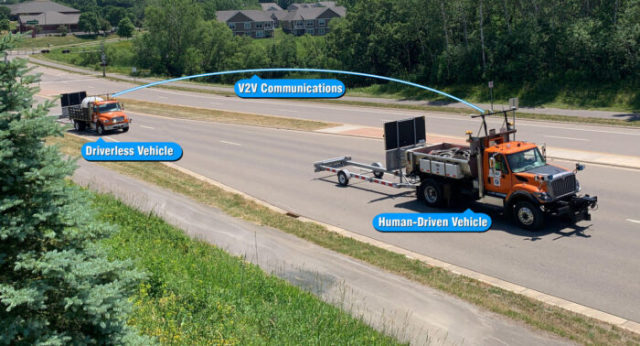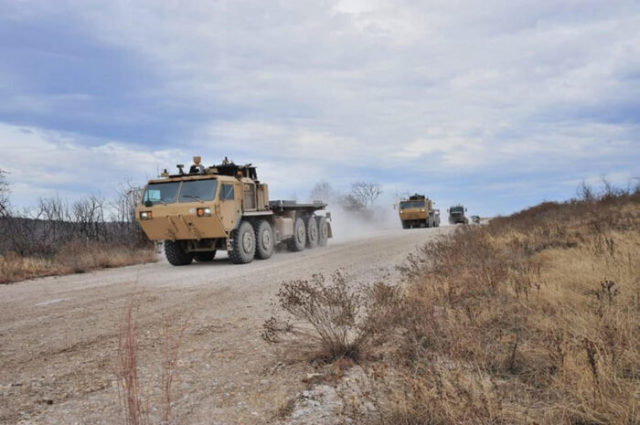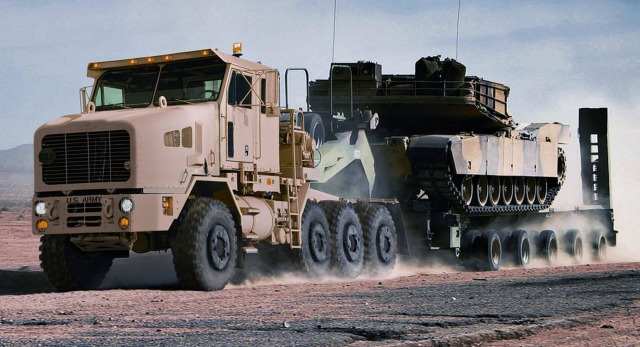Military personnel around the world are testing and implementing new autonomous vehicles (autonomous vehicl, AV, hereinafter also PBX. See part). [...] In turn, commercial enterprises are developing innovative solutions in the field of automated trucks suitable for military use.
Automated vehicles for the military
Commercial automated vehicles can also be used to support military operations. Civilian truck operators can benefit from savings in operating costs and the ability to continue operating economically as labor shortages become more pronounced. Automated trucks are currently being implemented as part of several pilot projects in Europe, North America and Asia. Guidehouse Insights predicts that 1.2 million automated trucks will be deployed worldwide by 2032.
The military's point of view on the use of commercial support for military operations was explained by the Major General The Royal Corps of Logistics of Great Britain by S. HUTCHINGS. He stated that "the British Army is committed to strengthening its operational logistics capabilities through the use of Robotic Autonomous Systems (RAS)." This kit includes large-sized trucks that can optionally be equipped with a leader-slave crew, which allows logistics personnel to increase the delivery capacity.

Management of biodiesel tankers in the "leader-slave" mode
The general argues that "the operational advantage lies in providing greater endurance over increasingly longer distances with a larger amount of material, which increases operational efficiency. RAS's ambitions also include small autonomous systems such as unmanned vehicles that can be optimized to perform last-mile logistical tasks, such as distributing blood products and critical spare parts."
Hutchings concluded that "all this requires the integration of sensors to ensure the collection and use of data in standards and volumes that have not yet been applied on the battlefield." However, he is aware of the need to understand the responsibility for logistics in the operation of these systems: "Maintaining a sustainable supply chain for autonomous systems will be important, as will the increasingly close integration of our industry partners. It is also clear that a discussion needs to be held on how skills can be transferred to military personnel if necessary in a crisis, otherwise we will not be able to ensure the maintenance of autonomous systems and their repair in the conflict zone."
A veteran of Operation Iraqi Freedom with in–depth knowledge, Michael P. NOONAN, Ph.D., senior researcher at the U.S.-based Institute for Foreign Policy Studies (FPRI), argues that "as technology advances, truck automation is becoming important for both civilian industry and the military. Although some applications of this technology will overlap — increasing the safety of long—range delivery of supplies and supplies - there will also be large differences in their use. Neither the civilian nor the military will fully control innovation and the spread of technological advances in this space."
M. Noonan suggests not thinking about any automation of cars as a simple replacement of people with unmanned systems: "This process, especially in military conditions, will almost certainly be a combination of a person and a machine for fast, accurate and safe delivery of goods through an area where movement may be hindered by enemy forces, criminal elements or displaced persons. The crew's ability to operate vehicles as needed, protect convoys, and perform necessary maintenance will be crucial. One can also think of scenarios in which a human-controlled system could remotely control other vehicles."
Testing of autonomous vehicles at the landfill
Going beyond research and development
The automation of military trucks is not just a matter of pure research and development or a science fiction hypothesis. For example, in 2011, the U.S. Army deployed the Squad Mission System Combat Support vehicle, also known as Ox, to the battlefields of Afghanistan. According to M. Noonan, experience has shown that "these remote-controlled vehicles are capable of performing tasks such as delivering ammunition to special operations forces in dangerous conditions or building materials to units on rough terrain."
Those who talk about pure automation can easily imagine certain scenarios in which it could benefit. M. Noonan's view on this is simple: "It would be possible to deliver goods through particularly hostile territories, which would reduce the risks of losses from artillery volleys or high-precision strike systems. Another option would be to deliver goods through an area contaminated with nuclear, chemical, biological or radiological hazards, although decontamination of systems would still be necessary."

Autonomous driving of U.S. Army Trucks at Fort Hood
Regarding the future of the PBX, it is argued that there is still "a long way to go to commercially profitable and scalable autonomous driverless vehicles. Meanwhile, improved next-generation driver assistance systems, leader-follower systems and other solutions for connected vehicles may become more widely commercially available. And this process is in full swing, despite the general macroeconomic difficulties. The man-in-the-loop type of solutions also complements the longer process of developing commercially viable custom self-driving vehicles."
Although some autonomous vehicle companies continue to advertise short-term commercial deployment plans, it is expected that additional investments of tens of billions of dollars may be required for each such large PBX company seeking to implement full-fledged systems. In addition, it will take a decade or more for completely uninhabited individual vehicles to become commercially profitable and scalable on open roads and in an uncontrolled environment.
A reckoning may begin in the market, which can be especially harsh for PBX companies that fail to develop products with significant interim income or alternative long-term sources of capital. Currently, a large-scale shake-up and consolidation of companies is gaining momentum, while several large companies are doing poorly. For those PBX companies that are able to survive and adapt, partial automation products or related solutions can also become important stepping stones on a much longer path to profitable fully unmanned systems.
According to experts, in recent years, many companies have begun to develop intermediate products that can be implemented in the near future, such as Advanced Driver Assistance Systems (ADAS), security and automation systems that increase the safety of human drivers, systems that require intensive direct control by remote human operators, and automation systems are only for use in strictly controlled environments such as truck/trailer parks, private mining/logging roads, controlled routes between warehouses, mining sites, construction sites and agricultural fields.
The heads of the US Department of Defense and other military departments see a long time before the full implementation of fully unmanned autonomous vehicles. Such PBX systems focus on the practicality and safety of automated man-in-the-loop systems, such as vehicles with a mixture of leader-slave functions, ADAS, and the individual capabilities of an automated vehicle. Further implementation of these types of military systems, largely supported by equipment manufacturers and suppliers with affiliated commercial enterprises, is expected to complement the commercial development and implementation of similar solutions.
Defense organizations face a long and winding path leading to scalable autonomous vehicles without a driver. Meanwhile, next-generation driver assistance systems, leader-follower systems and other solutions for connected vehicles can be implemented more widely, and this process is well underway.
Based on the materials of the resource euro-sd.com

